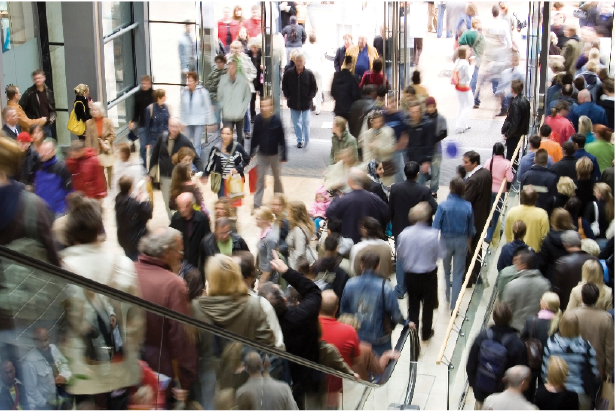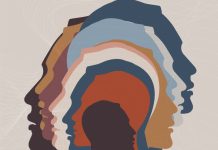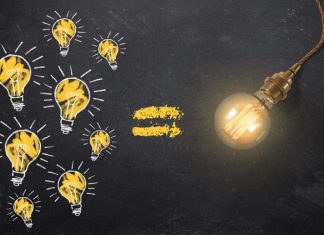By Alexander Bentley, Mark Earls and Michael J. O’Brien
Brand data often show that “I’ll have what she’s having” is a better default setting than “I’ll select the rational option.” But when everyone just shrugs and says, “I’ll have what she’s having,” there is no guarantee that the best things are what rise to the top. So how can real market data be used to “map” decisions along the dimensions of social influence and information?
It has become commonplace in recent years for marketers to dip into the social sciences to see what tools they can borrow to better understand human behaviors. The current mania for neuroscience is an excellent example. One rarely discussed problem with these carefree forays is that individual social sciences make very different assumptions about the behaviors they describe. To the classical economist, for example, rational actors monopolize the human stage, each with an uncanny ability to maximize benefits and minimize costs. These self-contained individuals rarely depend on anyone but themselves for learning new behaviors. By contrast, evolutionary psychologists assume our choices are driven by ancient hunter–gatherer instincts that can seem irrational in a modern Western society. They would argue that people gobble up sugary snacks because their hominid ancestors needed to grab them while they could. The anthropologist has very different assumptions again: humans as highly social animals, which means that almost all their decisions involve social learning and negotiation—sharing food, learning from prestigious people in the kinship group, and making alliances. Is one discipline right and the others wrong? Not exactly. Part of the answer is that the different disciplines operate at different scales, and that’s why they make different useful assumptions, from the psychology of the pensive, isolated individual to the sociology of frantic market populations. At one extreme, an individual makes a well- (or otherwise-) informed decision. At the other extreme, people effectively copy one another without thinking about it. In the vast area in between these extremes, understanding the individual’s behavior means also understanding the social context.
In our recently published book, I’ll Have What She’s Having: Mapping Social Behavior, we show how real market data – the kind most businesses and government bodies already possess – can be used to “map” decisions along the dimensions of social influence and information (Figure 1). It is a simple heuristic map, but it captures the essential elements of human decision-making that should be of concern to businesses and marketers in particular. As we show in the book, brand data often show that “I’ll have what she’s having” is a better default setting than “I’ll select the rational option.”
[ms-protect-content id=”9932″]
The Map
The north–south axis represents how well people are informed about their decisions. At the northern edge of the map are behaviors where there is some immediate, detectable, consistent impact of getting a decision right or wrong. At the southern edge are decisions where there is no measurable difference in benefits, often where people are poorly informed about their choices or otherwise overwhelmed by “decision fatigue.” The farther north we go, the more attuned agent decisions are with the landscape of costs and benefits.
The east–west axis represents whether people make their decisions individually or socially. At the far west is total individual learning, where agents rely only on their own knowledge of the costs and benefits. Pure social learning is in the far east. There, people do only as others do. In between, the landscape can represent markets at any scale – we can represent a population as a mix of social learners and individual learners, but every individual makes some decisions on her own and spends part of her time saying “I’ll have what she’s having.”
It sounds simple, but it turns out that the balance between social and individual learning is crucial to how communities behave. This has been realized in studies of fish schools, bird flocks, and animal herds, where experiments reveal, for example, that logical, coordinated behavior of an entire school can result from a majority who are copying their neighbors and a small (< 5%) minority who are acting individually, such as swimming toward a physical target in the pool. The school of fish might look as if all fish know where they are going when in fact only a very few are so well informed, but their swimming direction diffuses through the school by means of social learning. A naive observer might see a school of goal-directed individuals, which we would plot in the northwest, when in fact the school plots towards our southeast – mostly poorly informed social learning interspersed with informed individual action.
Why does this matter? Because most marketing and policy-making assumes that people all reside in the northwest: people make their own decisions asocially, with their own goals and preferences. These may be idiosyncratic. Many businesses have catalogues of consumer “types” that recognize a rich array differences within their market – soccer moms, for example – but nonetheless they are all individual differences. The northwest also captures the implicit assumption embedded in surveys about a product, regardless of social context – the friends and influences surrounding the product. Behavioral economics, with its (slightly) imperfect actors and their cognitive quirks goes in the northwest, as does evolutionary psychology, with its supposedly evolved preferences. Prehistoric hunter-gatherers had to balance travel costs versus caloric benefit, so the drastic change in this ratio for modern supermarket and restaurant traffic contributes to obesity.
This “map” would be just another four-box heuristic if it weren’t for its factual base: it relates specifically to patterns we can resolve from data on sales or behaviors. Ideally, this would be data on the relative popularity of all available options through time, but more practically it works with a list of the most popular choices through time, such as weekly bestseller lists, for example.
Around the map
A quick tour around the map will make this clearer. We can start in the northwest, as this is where the vast majority of economics has been for over a century. The northwest is where disseminated information about a new service or product is enough – the medical literature for a beneficial new pharmaceutical product, for example – because each individual has the time, motivation, and knowledge to think about all the inherent costs and benefits of the decision. Laptop screen size, for instance, plots in the northwest because it shows a diagnostic bell curve of popularity, which reflects an optimal size that fits most people’s needs. This means that people can choose individually based on clear physical constraints. A signature of the northwest, bell curves center on the best cost–benefit option and change little until something better comes along.
More and more, of course, people are forced to make rapid decisions from among a dizzying array of options and may resort to guesswork. This might lead us into the southwest, where people make poorly informed choices on their own. A novice choosing from among hundreds of listed mutual funds, or looking at a wall of similar eyeglasses, may well just pick at random. With huge selections and not much difference among them, cheap commercial products often lie in the southwest – too similar for anyone to notice in any social context.
With a great many options, the popularity of any particular choice is essentially a lottery. Half a century ago, marketing scientist Andrew Ehrenberg laid out the analytical expectations for the southwest quadrant. He showed that when consumers cannot tell the difference, the distribution of brand popularity is “short-tailed,” meaning that the probability of an option becoming extremely popular – the tail of the distribution – falls off exponentially. Also, when people resort to guesswork, there should be no consistency in the rank-order of popularity from one time period to the next. So while laptop screen size lies in the northwest, most of the different laptop models – hundreds and hundreds of black laptops out there – plot in the southwest. Except for the top five laptops or so, which we will get to in a minute.
Contrary to our default assumptions, it turns out that most marketing questions of interest do not, according to market data, actually plot in the northwest or southwest but rather in the eastern half of the map. Our intuition says we make our own decisions, but the data say that we are almost constantly influenced by other people’s decisions. Ideally, we are informed about our social influences – we listen to experts or we copy the most successful or prestigious people on a particular topic. Copying the most successful individuals means we have enough information to recognize real talent, such as hunter–gatherers knowing who the best hunter is in their small band. Copying better results is social learning we all understand, and it explains why the bow and arrow rapidly spread throughout eastern North America 1400 years ago and why Motorola’s Six Sigma process management strategy became widespread in the last 25 years. As Oded Shenkar describes in Copycats, businesses achieve commercial success through ruthlessly copying success.
Prestige, authenticity and age often go together – like an elder in a hunter-gatherer group, or an old single-malt whisky. Old as they may be, traditions are never static. All traditions are dynamic by definition, because they are passed down the generations by social learning. We take it for granted that an entire language is re-created in the first years of every person’s life, but each time we learn a tradition, there are errors or deliberate creative changes. It is remarkable that cultural traditions can endure for so long. In Europe, the Little Red Riding Hood folktale, nuclear families, and square houses are all thousands of years old. Among our ancient hominin ancestors, the same technique for knapping hand axes was taught from one generation to the next for over forty thousand generations. This resilience of human behavior over the generations reflects our remarkably sophisticated ability to learn from one another.
In the northeast quadrant, informed social learning – copying skill, quality, or prestigious individuals – calls on traditional social-diffusion theory, grounded in the model that marketing scientist Frank Bass proposed in 1969. Because the copying is well informed, there is coherence and logic to group behavior, as with schools of fish. We expect quality to be brought to the fore in the northeast through social interactions, as innovations are discovered and communicated through a population. Better things inevitably become commonplace, but they take time to diffuse smoothly through the relevant population because they must introduce them to one another.
Hierarchical social networks – each of us copying from the ranks above us, for example – help insure that the best options will spread, as shown by Erez Lieberman and colleagues at Harvard University. The Harvard group found, however, that diffused networks – people copying more indiscriminately – tend to minimize this advantage. When everyone just shrugs and says, “I’ll have what she’s having,” certain things become popular, but there is no guarantee that the best things are what rise to the top. This is the southeast quadrant.
Also, undirected copying yields continuous turnover in what is most popular, as long as there is some small flux of novel invention in the system. The diagnostic patterns of the southeast – long tail, continual turnover, and stochastic change – can be tested against popularity data. “I’ll have what she’s having” – after the famous scene in 1980s’ film When Harry Met Sally – became the title of our book because we have found that many modern market data show these diagnostic patterns. The data fit this description within the confines of the problem we were working on – the reason people use deodorant at all – for hygiene – fits the northwest quadrant, but the market for the brand of deodorant plots in the southeast quadrant. Different brands of the same product are usually in the southeast, especially as people are flooded not only with product choices but also with myriad social influences of recommendations, top-10 lists, and “most popular” search results. Lacking any inherent distinctiveness or any obvious social reputation is how things wind up in the southeast – many brand names, hackneyed clichés, and getting tattoos, for example.
The Age of “What She’s Having”
Understanding the southeast quadrant helps us explain why markets are changing faster than ever and in less predictable ways. Unpredictability is inherent to the southeast. In a controlled experiment, Duncan Watts and Matt Salganik found that people consistently chose the same sorts of music when acting in isolation – northwest – but when they were allowed to see what songs others were downloading, the behavior became more like “I’ll have what she’s having” – southeast – and the results, unpredictable.
Of course, the social version of this already-classic experiment represents the online world today. The 1960’s term “future shock” nicely describes our anxiety as the world shifts from the northeast, when ancient traditions changed slowly, over generations – to the southeast, where indiscriminant copying, random events, and global connectivity spread changes on the daily scale. We evolved in a world of few, but important, choices, but we live in a world of many, largely interchangeable ones. Just as we feel adapted to the new order of the world, new fashions and technologies wash over us, new buzzwords enter our conversation, and “Buy! Buy!” becomes “Sell! Sell!”
Eric Beinhocker describes the rapidity with which this explosion of diversity has occurred as a hundred-million-fold, or eight orders of magnitude, difference since the time of our hunter–gatherer ancestors a little over 10,000 years ago. Think about it: There are now over 50,000 restaurants in the greater New York City area and over 200 television channels on cable TV. A Walmart store near JFK International Airport has over 100,000 different items in stock.
Despite being overwhelmed with meaningless choices and social influences, individual choice is still the marketers’ default setting and, in our broader culture, perhaps even something of a religion. Canny marketers can use this mistaken assumption to their advantage. If a brand becomes popular in the southeast, through indiscriminant copying, this luck can be consolidated by moving it to the northwest and concocting post-hoc reasons for its success. Or it can be moved to the northeast because of reputation and brand loyalty. Much of what marketers mistakenly call “loyalty” however, remains in the southeast, sustained merely through its own inertia and bound to be ephemeral. Sales data become crucial here, in the patterns distinguishing the southeast from the northeast.
In traditional societies, differences between groups arose over many generations. In northern Cameroon and Chad, for example, neighboring Moussey and Massa groups intermarry and share a common genealogical origin and technology, yet they grow different crops, raise livestock in different ways, and dislike each others’ cuisine. Small amounts of randomness – whether introduced through creativity, nonconformity, or accident – get amplified through local social learning. In this Internet era of decision fatigue, as we are forced to copy more and more, differences between groups may therefore be amplified, despite the “globalised” connectivity.
These elements – flux, learning, selection, and random events – bring about a new age of models of human behavior. If the market no longer fits in the northwest, there is little value in trying to predict rational and optimal outcomes. If the market plots in the southeast, it is better approached as a matter of insurance or secure investment – coping with unpredictability by maximizing probabilities, minimizing risks, and placing many small bets. Probability distributions, population size, invention rate, interaction networks, and time span become the key parameters in floating with the tides. Marketing becomes less about satisfying the “archetypal” consumer and more about how many interconnected consumers affect each other’s behavior. Old ideas, such as the sanctity of the “brand,” have to be recast in terms of this bigger, more anthropological map. To do all this, it pays to have data analysts schooled in evolutionary theory, but if this is lacking, just point to someone and say, “I’ll have what she’s having.” It’s almost always a safe bet.
Alexander Bentley is Professor of Archaeology and Anthropology at the University of Bristol, UK. Mark Earls is a London-based author and consultant on marketing, communication, and behavior change. Michael J. O’Brien is Dean of the College of Arts and Science, Professor of Anthropology, and Director of the Museum of Anthropology at the University of Missouri.
[/ms-protect-content]






































